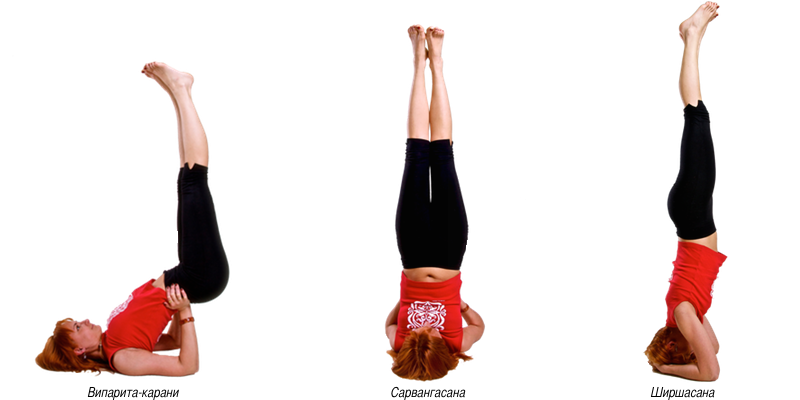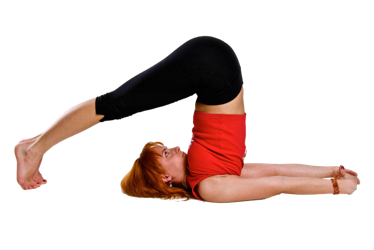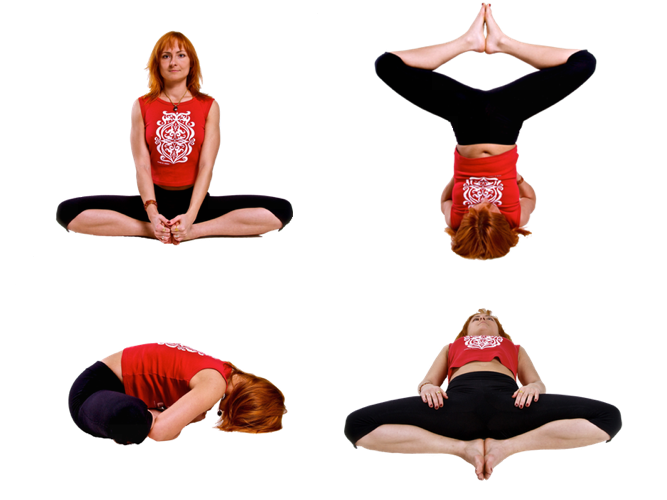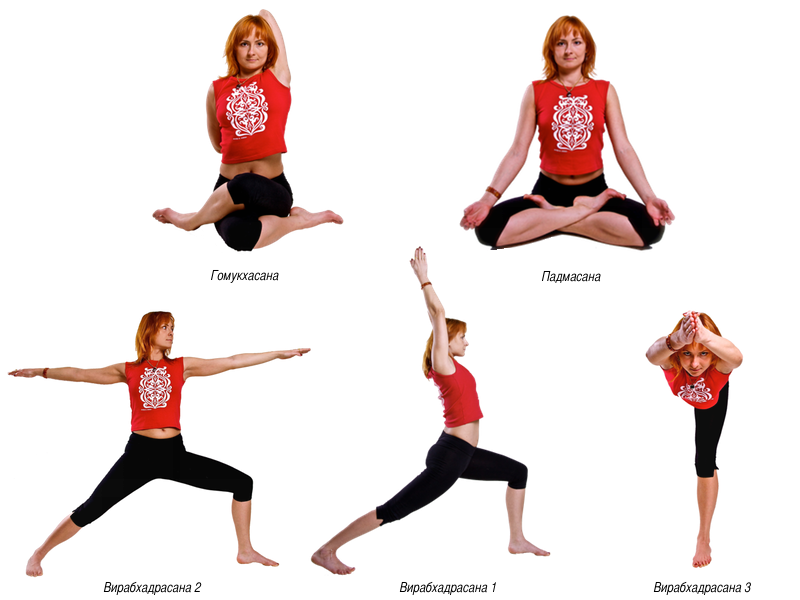Artem Frolov. Yoga-therapy in gynecology
Work of a human body is subordinated to a set of internal rhythms - vividly displayed and latent, dependent on time of the day and change of the seasons, diet and sleeping. Our body represents the most complicated mechanism: lots of big and tiny pendulums are continuously moving, being connected with each other, having continuous mutual influence. Heart beat and frequency of breath, change of gastric secretion and hormonal background, an intellectual tone and sexual activity - these and many other rhythms should be in optimum frequency relations, providing an equilibrium condition named health.
Unlike male a female organism has one more major biological pendulum, a menstrual cycle, which subordinates to itself many processes.
Monthly changes of a hormonal background result not only in possibility of conception and regular secretion. Condition of nervous system, a psycho-emotional background, processes of blood clotting and blood circulation, urination and processes of an organism in a whole are changing during menstrual cycle. Therefore female health is impossible without a regular cycle, a balanced work of sexual sphere.
Quite often gynecologic illnesses can be partially liquidated by usual hatha yoga class in a general group; however, for achieving a prompt yogic therapeutic effect the algorithm should include some obligatory directions, and the accent made should vary depending on pathology. To understand mechanisms of how yoga practice influences female reproductive system, first of all, let’s shortly consider basics of its functioning.
Basis of work of female sexual sphere – are three levels of endocrine regulation: hypothalamus (the higher regulatory centre), pituitary gland or hypophysis (an organ of direct management) and ovaries (peripheral endocrine glands). All three levels are interlinked by direct and converse connections rendering mutual regulating interaction, forming a harmonious hypothalamo-pituitary-ovarian system. Hypothalamus is the part of mesencephalon incorporated to a back lobe of the pituitary body by means of a pituitary stem.
Hypothalamus utilizes information that arrives from external and internal environment of an organism, and provides an internal homeostasis, being a key link, a higher regulatory centre coordinating the activity of various systems of an organism, including reproductive. Hypothalamus’ cells produce specific hormones transported into hypophysis through a blood system and supervising its secretion. Hypotalamic hormone regulating activity of sexual sphere is gonadoliberin (GL) which directly influences neurons of the hypophysis.
Hypophysis, in its turn, under the influence of gonadoliberin develops two basic hormonal factors which directly influence ovaries - follicle-stimulating (FSG) and luteinizing (LG) hormones. Both of these hormones play a major role in correct functioning of ovaries, maturing of a follicle and oocyte, estrogen and progesterone development in ovaries and also maintenance of a regular menstrual cycle.
Development of gonadoliberin occurs in a specific pulsing rhythm. For ensuring a normal secretion of FSG and LG a stable frequency of ejection of physiological quantities of GL is sufficient. Change of frequency of GL ejection changes not only a quantity, but also a parity of LG and FSG, at the same even a ten times time increase in concentration of gonadoliberin conducts just to a small increase of FSG and does not influence LG in any way.
Frequency of gonadoliberin ejection in women makes once in 70-90 minutes and corresponds to a variety of biorhythms (alternation of phases of speep, fluctuations of speed of a nephritic filtration and gastric secretion, frequency of blushing during climax etc.).
Asynchronousty of these biorhythms can result (and more often results) in failures of work of adjacent systems and organs: so, sleep or digestion disorders can deform or block menstrual cycle, changes in level of female sexual hormones can influence work of urinary system and so on.
Hatha yoga optimally regulates a rhythmic work of physiological “pendulums”, normalizes various biochemical and hormonal cycles, ensuring their frequency conformity with each other. How does it happen and how is the practice should be build up to ensure that?
Considering a gynecologic pathology it is possible to name (symbolically) the following groups of diseases:
1) dysregulatory conditions, connected with failures of interaction between links in hypothalamo-pituitary-ovarian axis that is often displayed in various changes of menstrual cycle;
2) congestive vascular, connected with unsatisfactory blood outflow from a venous channel of a small pelvis and female reproductive bodies (an uterus, fallopian tubes, ovaries) - small pelvis varicosis and development of stagnation as a whole;
3) infectious inflammatory, running with participation of infectious agents and with prevalence of an inflammatory component, often chronic;
4) neoplasm – benign (for example, an uterine myoma) and malignant oncological diseases of sexual sphere;
5) urgent conditions , demanding emergency medical assistance (such as extra-uterine pregnancy).
In this article we will consider the first three groups of diseases which closely adjoin with each other, often have a mixed character and provoke each other; however it should be mentioned that the last two also have a yoga therapeutic concern - a balanced practice of yoga in this case will play a role of the most powerful preventive factor.
So, we will consider directions of yogic therapeutic practice necessary for normalizing the work of female sexual sphere.
Inverted asanas
Performance of inverted asanas considerably increases blood inflow to brain arteries. Intensified brain blood circulation leads to the stimulation of hypothalamic-pituitary system. Increase of blood flow raises intracellular metabolism of neurons, amplifies regeneration of their receptor means, raises sensitivity to hormonal influences, and activates interconnections between links in hypothalamo-pituitary-ovarian axis.
From a small pelvis area, on the contrary, due to gravitational reasons an outflow of venous blood takes place. Women have perfect conditions here for development of small pelvis varicosis which happens due to peculiarities of venous vessels’ structure, their hormonal dependence and functional condition. The given disease often has a latent character, provokes chronic pelvic pains and aggravates inflammatory processes and dysfunctions of uterus and ovaries. Regular performance of inverted asanas considerably helps to a venous channel of pelvis areas; combinations of inverted positions with twisting elements (Parshva Sarvangasana, Parshva Halasana) are especially effective.
Inverted asanas (especially halasana) also have a stimulating effect on work of the liver, , increasing hepatic blood inflow. A considerable part of transformation and exchange of steroid sexual hormones takes place in the liver; therefore for normalization of a hormonal background it is necessary to include halasana and its accessible variations into the regular practice.
Ptosis of perineum and small pelvis organs quite often leads to changes of their normal interposition, pathological pressure of the uterus and the bladder against each other. The topography of arterial and venous vessels of pelvis is changing, haemostasia and blood supply disorders are developing – lowered bodies are as if “hanging” on vessels, stretching them out; the form of a vessel gap changes, vessel tone and reactions to regulatory influences are perverted. Regular performance of inverted asanas promotes a gradual return of the small pelvis organs to their normal position.
Abdominal manipulations
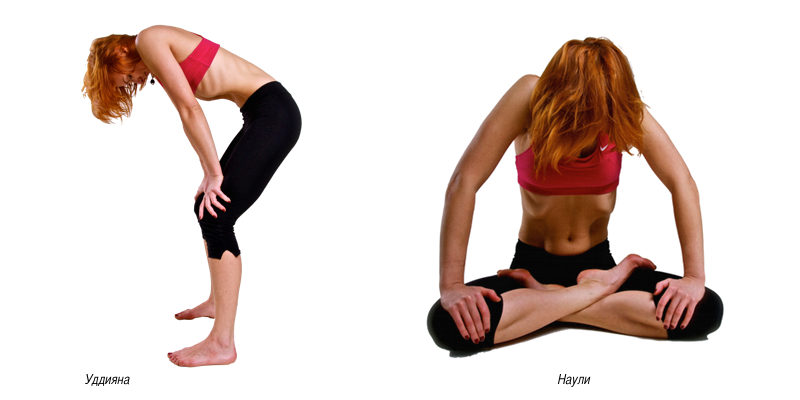
By means of abdominal manipulations - agnisara-dhauti, nauli - a massage of abdominal bodies (e.g. liver) and bodies of a small pelvis takes place as well as stimulation of capillary blood circulation and nervous terminations of the given area.
A more directed action on blood circulation of bodies of a small pelvis is made by uddiyana-bandha and madhyama nauli (simultaneous contraction of both direct abdominal muscles with a raised up position of a belly wall and a diaphragm). Created negative pressure in chest and abdomen cavities creates a powerful sticking action easing venous outflow from a small pelvis. It is enough to recollect that by means of the given technique basti-kriya is carried out - a yogic enema with retraction of water through a tube inserted into the anus - to estimate possibilities of the given method in “pulling up” stagnant venous blood from pelvis areas.
Uddiyana can perfectly supplement performance of inverted positions (uddiyana-bandha in viparita-karani-mudra), and at simultaneous performance both techniques will possess interpotentialized action.
Finally, stimulation and normalization of digestion, work of intestines, its microbic balance lead to normalization of the immune background and decreases a probability of developing diseases in which the immunity attacks its own tissues and bodies. Similar mechanism plays an important role in developing so-called syndrome of premature fading of ovaries characterized by premature (35-37 years old) climax and loss of reproductive function. The given thesis concerns to the full extend all the techniques that stimulate work of digestive system (twisting and inverted asanas, mayurasana, corresponding shatkarmas etc.)
Baddha-konasana and its cycle
In physiology there is a concept of proprioceptive sensitivity: muscular, ligamentary and osseo-articular apparatus have receptive, sensitive nervous terminations playing a role in forming the feeling of body position, etc. In other words proprioception is a set of sensations received from locomotorium, muscles and ligaments. It does not only give us a possibility to realize the position of a body in space; proprioception also plays an important role in nervous trophicity of internal bodies. Pelvic and inguinal areas usually are in a deficiency condition of proprioceptive stimulation (quite often it is reduced just to contact of buttocks with a seat of a car armchair and a sofa) that affects functional condition of bodies of the given zone.
Stretching of muscular and connective tissue structures and intensive influence on proprioceptive receptors tones up the peripheral nervous apparatus, raises the level of metabolism in nervous terminations, liquidates “proprioceptive hunger”, thus improving blood circulation in small pelvis bodies, processes of their trophicity and nervous stimulation.
Except for baddha-konasana and its variations the described mechanisms can have beneficial influence from performing all asanas that intensively involve area of perineum and hip joints - padmasana, gomukhasana, different variants of virabhadrasana etc.
The practice of ashhvini-mudra and mula-bandha renders an effect similar to baddha-konasana, with a difference that the method of influencing proprioceptive sensitivity is a bit different - not stretching, but contracting the muscles and thus stimulating numerous nervous terminations located in their depth.
Besides, strengthening muscles of perineum leads to normalization of the position of pelvis diaphragm, internal genitals, elimination of pathological pressure of bodies against each other and chronic pelvic pains. Normalized arrangement of arteries and veins promotes improvement of local blood circulation.
Work of perineum muscles has a massaging effect on bodies of the small pelvis and surrounding fat, thereby making active their capillary blood circulation which influences a functional activity of reproductive bodies.
Respiratory practices
While performing all yogic practices (unless it is specifically mentioned) breathing is carried out through the nose. Physiology here again confirms a surprising accuracy with which a thousand-year experience of yoga has constructed principles of yogic sadhana.
Importance of nasal breathing is proved by a connection of nasal mucous with the central nervous system. There is a difficult system of cavities in the brain (cerebral cavities) which are connected among themselves and with spinal space through a system of channels. In these cavities liquor circulates - the major biological liquid containing a set of active substances, influencing work of the central nervous system. Besides, the composition of liquor cardinally influences activity of a whole organism - for example, acidity of liquor and quantity of СО2 are the major parameters regulating activity of the respiratory centre.
There is a reflex connecting nasopharyngeal mucous and nervous system. Rhythmic depression of air in nasal passages causes fluctuations of intracranial pressure that is a moving power of liquor secretion and transition.
It is known for a long time that disorders of reflex stimulation of the central nervous system caused by difficulties of nasal breathing are especially dangerous at children's age and can lead to delays in mental and physical development of a child.
Partial or complete dysfunction of nasal breathing increases intracranial pressure, leads to changes in tonus of brain vessels, headaches and depressed mental conditions. Functioning of hypothalamic-pituitary systems and adequate regulation of a menstrual cycle are influenced.
Therefore adequate nasal breathing is the basis for normal work of the central nervous system, and it is necessary for correcting deviations in work of hypothalamic-pituitary axis. At menstrual cycle disorders techniques that allow providing a proper condition of nasal passages - jala and sutra neti, kapalabhati, bhastrika – should be used, mastered and included into the regular practice.
Performance of all kinds of pranayamas concern reflexes described above. The simplest and effective yogic therapeutic technique is nadi-shodhana. It leads to balancing of processes of excitation and inhibition in central nervous system, normalization of difficult processes of neuromethabolism, liquor circulation, functioning of hypothalamic-pituitary system and regulation of a menstrual cycle.
Besides, among respiratory techniques with reference to yoga therapy of gynecologic sphere there should be mentioned those that improve venous outflow from small pelvis. One of the basic mechanisms of venous outflow is а sticking action of the thorax while inhaling - pressure in large veins (upper and lower vena cava running into the right atrium) and venous blood directs to the area of low pressure, from pelvic veins and lower limbs. Respiratory techniques stimulating venous outflow should be applied. In cases of congestive character problems (small pelvis varicosis, chronic inflammatory processes): short delays on inhale (kumbhaka is supported due to isometric contraction of intercostal respiratory muscles, glottic slit is released!), performing uddjaya on inhale also intensifies venous outflow.
Finally, performing hypoventilating pranayamas (mastering them is a long term process under the guidance of a skilled instructor) develop hypercapnic (connected with the increase of level of carbonic gas in blood) and hypoxic (decrease of level of oxygen) effects. Periodic hypercapnia and hypoxia render a dosed training effect, they, raise adaptive possibilities of intracellular respiratory apparatus, stimulate metabolism of cells of all systems and organs, and promote disclosing of small arterioles and capillaries, including those of hypothalamic-pituitary-ovarian system.
Relaxation
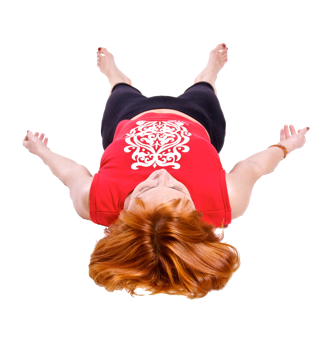
One of the most frequent reasons of menstrual cycle disorders is a constant emotional tension and chronic stress. Hypothalamus is the structure susceptible not only to signals “from below”, from a hypophysis and ovaries, but to influences “from above” as well - from cerebral cortex, mentality, emotions, processes of the higher nervous activity. Long term existing centers of “negative” excitation in a cortex interfere into the work of subcortical structures, destroy and disorganize their work and harmonious interaction.
Practice of shavasana and yoga nidra normalizes the tonus of the central nervous system and psychoemotional background; liquidates stagnant pathological centers and excessive influences of the cortex on hypothalamic-pituitary-ovarian system.
General influence of physical activities
In general physical activities, certainly, make a positive impact on menstrual cycle and woman’s health as a whole. For example, it is authentically proved, that regular physical exercises reduce displays of premenstrual syndrome. The increase in quantity of functioning capillaries, general blood channel, improvement of rheological properties of blood promote determination of normal functions of all systems of an organism.
However, for an optimum condition of female organism a corresponding, the most suitable level of activity should be chosen, including the one received during yoga practice.
To get an established normal menstrual cycle and consequently ability to a child-bearing, a woman’s organism should collect the minimum, threshold quantity of fatty tissue as it participates in the regulation of sexual function.
Synthesis of estrogens occurs in ovaries, adrenal glands and fatty tissue. About one third of all circulating estrogens are synthesized in the last, therefore a decrease in body weight below the norm at the expense of fatty tissue can lead to hypoestrogenia and amenorrhea. In some cases excessively intensive practice of yoga leads to disappearance of menstruations; after the algorithm of physical activity is optimized (accents made on relaxation and trophotropic processes) menstrual cycle is restored in most of the cases.
In case of obesity, on the contrary, excessive weight of fatty tissue produces raised quantities of estrogens that also as a result influence the process of ovulation. At alimentary obesity (connected with diet and constitution) disorders of menstrual functions happen six times more often and sterility almost twice more often. However to restore menstruations it is often enough to lower the body weight for 10-15%. In this case a more intensive mode of practice is prescribed directed to decrease body weight, with daily performance of stimulating, “warming up” techniques: agnisara-dhauti-kriya, surya namaskar, etc.
All mentioned directions should be present In yogic therapeutic algorithm, but depending on the diagnosis accents should be put on different techniques. For example, menstrual cycle disorders, connected with a regular emotional stress, require obligatory practices of deep relaxation and nadi-shodhana. Small pelvis varicosis (especially in combination with sitting work) demand fulfillment of different variations of inverted asanas in combination with uddiyana-bandha and respiratory techniques stimulating venous outflow to the heart. Yoga therapy of chronic diseases of appendages and uterus should include regular performance of baddha-konasana and its variants, gomukhasana and others asanas that involve nervously sensitive apparatus of coxofemoral and inguinal zones. Depending on pathology this or that direction gets an obligatory character, however an optimum result will be gained at the complex approach involving all mentioned directions.
Not accidentally the duration of a menstrual cycle of a woman corresponds to the duration of a lunar month. Quite often we can observe how due to balanced yoga practice the cycle becomes not only regular. In due course there is a “binding” of a female cycle to the lunar period, and menstruations begin in a new moon, whereas ovulation (the exit of oocyt ready to fertilization), corresponds to astronomical culmination - to a full moon. The given phenomenon (at its metaphysical beauty), obviously, has quite physical reasons. Interaction of powerful electromagnetic fields of the Earth and the Moon, their influence on a female organism lead to that the biological pendulum of a menstrual cycle, at first being adjusted in itself, then is harmoniously built in the general rhythm of the Nature.
Be healthy and joyful!
Website of Artem Frolov (Rus) artem-frolov.spb.ru



